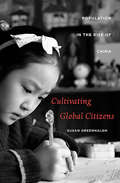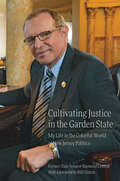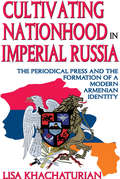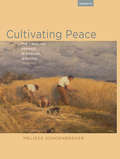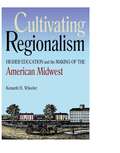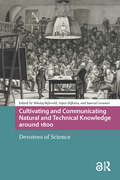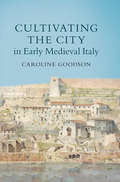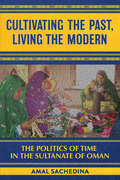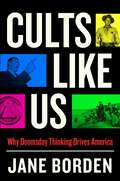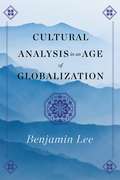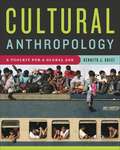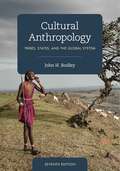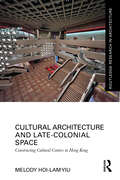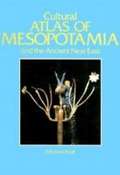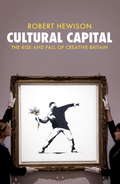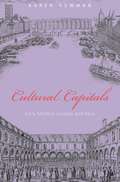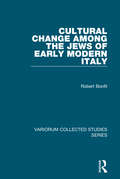- Table View
- List View
Cultivating Global Citizens: Population in the Rise of China (Cultivating global citizens. The Edwin O. Reischauer Lectures, 2008.)
by Susan GreenhalghCurrent accounts of China’s global rise emphasize economics and politics, largely neglecting the cultivation of China’s people. Susan Greenhalgh, one of the foremost authorities on China’s one-child policy, places the governance of population squarely at the heart of China’s ascent. Focusing on the decade since 2000, and especially 2004–09, she argues that the vital politics of population has been central to the globalizing agenda of the reform state. By helping transform China’s rural masses into modern workers and citizens, by working to strengthen, techno-scientize, and legitimize the PRC regime, and by boosting China’s economic development and comprehensive national power, the governance of the population has been critically important to the rise of global China. After decades of viewing population as a hindrance to modernization, China’s leaders are now equating it with human capital and redefining it as a positive factor in the nation’s transition to a knowledge-based economy. In encouraging “human development,” the regime is trying to induce people to become self-governing, self-enterprising persons who will advance their own health, education, and welfare for the benefit of the nation. From an object of coercive restriction by the state, population is being refigured as a field of self-cultivation by China’s people themselves.
Cultivating Inquiry-Driven Learners: The Purpose of a College Education for the Twenty-First Century
by Clifton Conrad Laura DunekHow can colleges develop learners who pursue innovative ideas that enable them to flourish and contribute in a rapidly changing world?Two decades into the twenty-first century, our nation's colleges and universities no longer embrace a clear and convincing definition of the purpose of a college education. Instead, most institutions have fallen prey to a default purpose in which college is essentially workforce preparation for jobs that already exist, while students are viewed as commodities instead of being educated to flourish throughout their lives. But rather than bemoan the diminishing legacy of liberal education, this new edition of Cultivating Inquiry-Driven Learners argues that the time has come to advance a pioneering purpose of college that guides the undergraduate experience from program requirements to teaching and learning.This purpose, Clifton Conrad and Laura Dunek write, is anchored in the premise that the world in which we live is one in which change—environmental, cultural, economic, political—is a constant driving force. The authors envision a college-educated person in the twenty-first century as an "inquiry-driven learner": a person equipped with the capabilities to explore and cultivate ideas that will prepare them to successfully navigate constant change, capitalize on career opportunities, enrich their personal life, and contribute to the public good. They describe four signature capabilities that students must develop in order to innovate and adapt: core qualities of mind, critical thinking skills, expertise in divergent modes of inquiry, and the capacity to express and communicate ideas.Guided by this trailblazing vision, Conrad and Dunek have thoroughly revised every chapter of the book to reflect current scholarship and emerging trends. In an expanded conclusion, they provide a cornucopia of ideas for replenishing undergraduate education accompanied by real-world examples of innovative programs and practices from colleges and universities across the United States. Throughout, Cultivating Inquiry-Driven Learners challenges stakeholders from across higher learning—faculty, students, staff, administrators, and policymakers—to reflect on the purpose of college, embrace innovation, and ensure that students are educated to thrive in and contribute to our constantly changing world.
Cultivating Justice in the Garden State: My Life in the Colorful World of New Jersey Politics
by Raymond LesniakBorn into a working-class Polish immigrant family in Elizabeth, New Jersey, Raymond Lesniak went on to become a major force in the tough and bruising world of state politics. In this remarkable memoir, he reflects upon his life and career fighting for social justice in the Garden State. He recounts the many causes he championed in his forty years as a state legislator, from the landmark Environmental Cleanup Responsibility Act to bills concerning animal protections, marriage equality, women’s reproductive rights, and the abolition of the death penalty. He also delves into his experiences on the national stage as a key advisor for Bill Clinton and Al Gore’s presidential campaigns. With refreshing candor, Lesniak describes both his greatest achievements and his moments of failure, including his unsuccessful 2017 gubernatorial run. Cultivating Justice in the Garden State is both a gripping American success story and a must-read for anyone seeking to understand the inner workings of our political system. It offers an insider’s perspective on the past fifty years of New Jersey politics, while presenting a compelling message about what leaders and citizens can do to improve the state’s future.
Cultivating Nationhood in Imperial Russia: The Periodical Press and the Formation of a Modern Armenian Identity
by Lisa KhachaturianNineteenth-century Armenia was a zone of competition between the Persian, Ottoman, and the Russian Empires. Yet over the course of the century a new generation of Armenian journalists, scholars, and writers worked to transform their geographically, socially, and linguistically fragmented communities threatened by regional isolation and dissent, into a patriotic and nationally conscious population. Lisa Khachaturian seeks to explain how this profoundly divided society managed to achieve a common cultural bond.The national project that captivated nineteenth-century Eastern Armenian intellectuals was a daunting task, especially since their efforts were directed in the Caucasus--a territory known for its volatile history, its ethnic heterogeneity, and its linguistic complexity. Although this cultural and social maelstrom was both aggravated and tempered by the new Russian arena of economic growth, urban development, and heightened technology and communication, diversity was hardly a recent phenomenon in the region; it had been an endemic part of Caucasian history for centuries. Armenians were no exception to this. While the Georgians, bound to their landed nobility, generally lived within kingdoms, the Armenians experienced centuries of forced resettlement, migration, and centuries of habitation among other peoples. Some Armenians had settled in faraway countries, but many remained in scattered colonies within the boundaries of historic Armenia.This is a study of the formation of modern Armenian national consciousness under Imperial Russian rule. The Tsarist acquisition of Armenian-populated territory and consequent efforts to integrate this territory into the empire imposed sufficient unity to provide a basis for a nascent national movement. The particular influences of Russian imperial rule met the Eastern Armenian communities to create a new environment for a modern national revival. This book reviews how nineteenth-century Armenian intellectuals discussed and conceived of the nation through the formation of the Armenian press. This is a rare blend of national culture and communication networking.
Cultivating Peace: The Virgilian Georgic in English, 1650-1750 (Transits: Literature, Thought & Culture 1650-1850)
by Melissa SchoenbergerDuring the decades following the English civil wars, British poets seeking to make sense of lingering political instabilities turned to Virgil’s Georgics. This ancient poem betrays deep ambivalences about war, political power, and empire, and such poets as Andrew Marvell, John Dryden, and Anne Finch found in these attitudes valuable ways of responding to the uncertainties of their own time. Composed during a period of brutal conflict in Rome, Virgil’s agricultural poem distrusts easy stability, urging its readers to understand that lasting peace must be sowed, tended, reaped, and replanted, year after year. Like the ancient poet, who famously depicted a farmer’s scythe suddenly recast as a sword, the poets discussed in Cultivating Peace imagine states of peace and war to be fundamentally and materially linked. In distinct ways, they dismantle the dream of the golden age renewed, proposing instead that peace must be sustained by constant labor. Published by Bucknell University Press. Distributed worldwide by Rutgers University Press.
Cultivating Regionalism: Higher Education and the Making of the American Midwest
by Kenneth WheelerIn this ambitious book, Kenneth Wheeler revises our understanding of the nineteenth-century American Midwest by reconsidering an institution that was pivotal in its making—the small college. During the antebellum decades, Americans built a remarkable number of colleges in the Midwest that would help cultivate their regional identity. Through higher education, the values of people living north and west of the Ohio River formed the basis of a new Midwestern culture. Cultivating Regionalism shows how college founders built robust institutions of higher learning in this socially and ethnically diverse milieu. Contrary to conventional wisdom, these colleges were much different than their counterparts in the East and South—not derivative of them as many historians suggest. Manual labor programs, for instance, nurtured a Midwestern zeal for connecting mind and body. And the coeducation of men and women at these schools exploded gender norms throughout the region. Students emerging from these colleges would ultimately shape the ethos of the Progressive era and in large numbers take up scientific investigation as an expression of their egalitarian, production-oriented training. More than a history of these antebellum schools, this elegantly conceived work exposes the interplay in regionalism between thought and action—who antebellum Midwesterners imagined they were and how they built their colleges in distinct ways.
Cultivating and Communicating Natural and Technical Knowledge around 1800: Devotees of Science (Studies in the History of Knowledge)
by Nikolaj Bijleveld Arjen Dijkstra Samuel GessnerThis is a book about some of the unexpected people and places involved in cultivating knowledge of the natural world and mastery of scientific apparatus around 1800, taking readers across continental Europe from the Enlightenment to the onset of academic professionalisation. The authors widen the horizon of inquiry by looking beyond the scientific elite of academies and prestigious science sponsored by princely courts, the focus of previous major studies of this time period. They consider people of diverse professions and occupations who advanced scientific knowledge through practical means by devoting their spare time and personal resources, thereby crossing geographic, linguistic and societal barriers. The case studies together demonstrate that such individuals contributed substantially to the spread of new knowledge and found ways to contribute technical innovations to society. The present volume is devoted to these people: the devotees of science.
Cultivating the City in Early Medieval Italy
by Caroline GoodsonFood-growing gardens first appeared in early medieval cities during a period of major social, economic, and political change in the Italian peninsula, and they quickly took on a critical role in city life. The popularity of urban gardens in the medieval city during this period has conventionally been understood as a sign of decline in the post-Roman world, signalling a move towards a subsistence economy. Caroline Goodson challenges this interpretation, demonstrating how urban gardens came to perform essential roles not only in the economy, but also in cultural, religious, and political developments in the emerging early medieval world. Observing changes in how people interacted with each other and their environments from the level of individual households to their neighbourhoods, and the wider countryside, Goodson draws on documentary, archival, and archaeological evidence to reveal how urban gardening reconfigured Roman ideas and economic structures into new, medieval values.
Cultivating the Masses: Modern State Practices and Soviet Socialism, 1914–1939
by David L. HoffmannUnder Stalin's leadership, the Soviet government carried out a massive number of deportations, incarcerations, and executions. Paradoxically, at the very moment that Soviet authorities were killing thousands of individuals, they were also engaged in an enormous pronatalist campaign to boost the population. Even as the number of repressions grew exponentially, Communist Party leaders enacted sweeping social welfare and public health measures to safeguard people's well-being. Extensive state surveillance of the population went hand in hand with literacy campaigns, political education, and efforts to instill in people an appreciation of high culture.In Cultivating the Masses, David L. Hoffmann examines the Party leadership's pursuit of these seemingly contradictory policies in order to grasp fully the character of the Stalinist regime, a regime intent on transforming the socioeconomic order and the very nature of its citizens. To analyze Soviet social policies, Hoffmann places them in an international comparative context. He explains Soviet technologies of social intervention as one particular constellation of modern state practices. These practices developed in conjunction with the ambitions of nineteenth-century European reformers to refashion society, and they subsequently prompted welfare programs, public health initiatives, and reproductive regulations in countries around the world.The mobilizational demands of World War I impelled political leaders to expand even further their efforts at population management, via economic controls, surveillance, propaganda, and state violence. Born at this moment of total war, the Soviet system institutionalized these wartime methods as permanent features of governance. Party leaders, whose dictatorship included no checks on state power, in turn attached interventionist practices to their ideological goal of building socialism.
Cultivating the Nile: The Everyday Politics of Water in Egypt
by Jessica BarnesThe waters of the Nile are fundamental to life in Egypt. In this compelling ethnography, Jessica Barnes explores the everyday politics of water: a politics anchored in the mundane yet vital acts of blocking, releasing, channeling, and diverting water. She examines the quotidian practices of farmers, government engineers, and international donors as they interact with the waters of the Nile flowing into and through Egypt. Situating these local practices in relation to broader processes that affect Nile waters, Barnes moves back and forth from farmer to government ministry, from irrigation canal to international water conference. By showing how the waters of the Nile are constantly made and remade as a resource by people in and outside Egypt, she demonstrates the range of political dynamics, social relations, and technological interventions that must be incorporated into understandings of water and its management.
Cultivating the Past, Living the Modern: The Politics of Time in the Sultanate of Oman
by Amal SachedinaCultivating the Past, Living the Modern explores how and why heritage has emerged as a prevalent force in building the modern nation state of Oman. Amal Sachedina analyses the relations with the past that undergird the shift in Oman from an Ibadi shari'a Imamate (1913–1958) to a modern nation state from 1970 onwards. Since its inception as a nation state, material forms in the Sultanate of Oman—such as old mosques and shari'a manuscripts, restored forts, national symbols such as the coffee pot or the dagger (khanjar), and archaeological sites—have saturated the landscape, becoming increasingly ubiquitous as part of a standardized public and visual memorialization of the past. Oman's expanding heritage industry, exemplified by the boom in museums, exhibitions, street montages, and cultural festivals, shapes a distinctly national geography and territorialized narrative. But Cultivating the Past, Living the Modern demonstrates there are consequences to this celebration of heritage. As the national narrative conditions the way people ethically work on themselves through evoking forms of heritage, it also generates anxieties and emotional sensibilities that seek to address the erasures and occlusions of the past.
Cultivating the Renaissance: A Social History of the Medici Tuscan Villas
by Katie CampbellBy exploring the evolution of the Medici family’s villas, Cultivating the Renaissance charts the shifting politics, philosophy and aesthetics of the age and chronicles the rise of an extraordinary family from obscure farmers to European royalty. From the fourteenth to the eighteenth century, the Medici family dominated European life. While promoting both arts and sciences, the Medici helped create a new style of architecture, present a new idea of villa life and promote the novel idea of living in harmony with nature. Used variously for pleasure and sports, scholarly and amorous liaisons, commercial enterprise and botanical experimentation, their villas both expressed and influenced contemporary ideas on politics, philosophy, art and design. Each patron's public interests and private passions, as well as the architects, artists and philosophers they employed, are examined. Through a chronological approach, this book reveals how the villas were used, their reception by contemporary commentators, their legacy and their current state five centuries after they were first built. Lavishly illustrated, Cultivating the Renaissance is of great interest to students and scholars of architecture, horticulture, landscape history, philosophy, art and the history of the Renaissance in Italy.
Cults Like Us: Why Doomsday Thinking Drives America
by Jane BordenFor readers of Fantasyland and Cultish, a colorful and enlightening pop history that explains why the eccentric doomsday beliefs of our Puritan founders are still driving American culture today, contextualizes the current rise in far-right extremism as a natural result of our latent indoctrination, and proposes that the United States is the largest cult of all.Since the Mayflower sidled up to Plymouth Rock, cult ideology has been ingrained in the DNA of the United States. In this eye-opening book, journalist Jane Borden argues that Puritan doomsday belief never went away; it went secular and became American culture. From our fascination with cowboys and superheroes to our allegiance to influencers and self-help, susceptibility to advertising, and undying devotion to the self-made man, Americans remain particularly vulnerable to a specific brand of cult-like thinking. With in-depth research and compelling insight, Borden uncovers the American history you didn&’t learn in school, including how we are still being brainwashed, making us a nation of easy marks for con artists and strong men. Along the way, she also revisits some of the most fascinating cults in this country—including, the Mankind United and Love Has Won—presenting them as integral parts of our national psyche rather than aberrations.
Cultural Analysis in an Age of Globalization
by Benjamin LeeCultural Analysis in an Age of Globalization draws upon contemporary work in anthropology, philosophy, linguistics, and literary theory to analyze the rise of "speculative capital" and its role in a global shift from production-centered to circulation-centered capitalism.
Cultural Anthropology (6th edition)
by Barbara MillerSuccessfully integrating attention to culture change, gender, class, race, ethnicity, and the environment, Barbara Miller's Cultural Anthropology engages students with compelling ethnographic examples, and demonstrates the relevance of anthropology in today's world.
Cultural Anthropology (9th edition)
by Serena Nanda Richard L. WarmsThis book continues to bring you excellent coverage of cultures from around the world. The text also continues to emphasize issues of gender, stratification, ethnicity, globalization, and contemporary issues.
Cultural Anthropology: A Toolkit for A Global Age
by Kenneth J. GuestInspires students to think like anthropologists in a multicultural and global age.Covering the essential concepts that drive cultural anthropology today, Ken Guest's Cultural Anthropology: A Toolkit for a Global Age shows students that now, more than ever, global forces affect local culture and that the tools of cultural anthropology are essential to living in a global society. A "toolkit" approach encourages students to pay attention to big questions raised by anthropologists, offers study tools to remind readers what concepts are important, and shows them why it all matters in the real world.
Cultural Anthropology: Tribes, States, and the Global System
by John H. BodleyCultural Anthropology: Tribes, States, and the Global System, Seventh Edition, provides balanced coverage of three dramatically different cultural worlds by focusing on problems of social inequality, human well-being, social justice, and sustainability. Author John Bodley challenges students to consider “big questions” about the nature of cultural systems: How are cultures structured to satisfy basic human needs? What is it like to be human under different cultural conditions? Are DNA, language, and environment determinants of culture? Are materialist explanations more useful than ideological ones? What are the major turning points in human history? Scale and power remains the primary theoretical framework, but cultural evolutionary perspectives have been expanded.
Cultural Architecture and Late-Colonial Space: Constructing Cultural Centres in Hong Kong (Routledge Research in Architecture)
by Melody Hoi-lam YiuThis book offers the first in-depth study of three major Hong Kong public cultural architecture works, Tsuen Wan Town Hall, Shatin Town Hall and the Hong Kong Cultural Centre (HKCC), built in the late-colonial years.Recent developments at the West Kowloon Cultural District (WKCD) have attracted global attention to Hong Kong's cultural scene with iconic projects designed by world-renowned architects. However, relatively little has been written about the common-type municipal cultural buildings. Conceived and constructed over the last decades of British colonial rule, these public buildings are sometimes regarded with lower aesthetic value and neglected in the architectural discourse. Yet, they are evidence of the cultural and urban policy during a critical time in Hong Kong as it transitioned from a colonial territory to currently a semi-autonomous city. The book provides a detailed chronology of the development of municipal cultural buildings in Hong Kong by compiling textual and graphic data from archival documents and government records, some of which have not been previously accessible to readers, accompanied by newly produced analytical diagrams and drawings. This history intersects with key moments during the late-colonial period in Hong Kong, presenting a particular perspective related to the social context in its dealings with cultural architecture and spatial practices.This book is a timely reflection of cultural and spatial production, calling for alternative projections about Hong Kong’s future urban and cultural development. It will be of interest to researchers and students of architectural design, urban planning and cultural policy studies in Hong Kong and the East Asia region.
Cultural Atlas of Mesopotamia and the Ancient Near East
by Michael RoafAlmost all the present knowledge of the ancient Near East has been resurrected by archeologists over the last century and a half. The early chapters of the book cover the periods before the invention of writing, when the material remains left by the early inhabitants of the Near East provide the basic evidence. In later periods, more abundant textual sources have been recovered and the scope of the investigation extends to historical events and personalities.
Cultural Borders of Europe: Narratives, Concepts and Practices in the Present and the Past (Making Sense of History #30)
by Mats Andrén Thomas Lindkvist Ingmar Söhrman Katharina VajtaThe cultural borders of Europe are today more visible than ever, and with them comes a sense of uncertainty with respect to liberal democratic traditions: whether treated as abstractions or concrete realities, cultural divisions challenge concepts of legitimacy and political representation as well as the legal bases for citizenship. Thus, an understanding of such borders and their consequences is of utmost importance for promoting the evolution of democracy. Cultural Borders of Europe provides a wide-ranging exploration of these lines of demarcation in a variety of regions and historical eras, providing essential insights into the state of European intercultural relations today.
Cultural Capital
by Robert HewisonBritain began the twenty-first century convinced of its creativity. Throughout the New Labour era, the visual and performing arts, museums and galleries, were ceaselessly promoted as a stimulus to national economic revival, a post-industrial revolution where spending on culture would solve everything, from national decline to crime. Tony Blair heralded it a "golden age." Yet despite huge investment, the audience for the arts remained a privileged minority. So what went wrong?In Cultural Capital, leading historian Robert Hewison gives an in-depth account of how creative Britain lost its way. From Cool Britannia and the Millennium Dome to the Olympics and beyond, he shows how culture became a commodity, and how target-obsessed managerialism stifled creativity. In response to the failures of New Labour and the austerity measures of the Coalition government, Hewison argues for a new relationship between politics and the arts.From the Trade Paperback edition.
Cultural Capitals: Early Modern London and Paris
by Karen NewmanSocial theories of modernity focus on the nineteenth century as the period when Western Europe was transformed by urbanization. Cities became thriving metropolitan centers as a result of economic, political, and social changes wrought by the industrial revolution. In Cultural Capitals, Karen Newman demonstrates that speculation and capital, the commodity, the crowd, traffic, and the street, often thought to be historically specific to nineteenth-century urban culture, were in fact already at work in early modern London and Paris. Newman challenges the notion of a rupture between premodern and modern societies and shows how London and Paris became cultural capitals. Drawing upon poetry, plays, and prose by writers such as Shakespeare, Scudéry, Boileau, and Donne, as well as popular materials including pamphlets, ballads, and broadsides, she examines the impact of rapid urbanization on cultural production. Newman shows how changing demographics and technological development altered these two emerging urban centers in which new forms of cultural capital were produced and new modes of sociability and representation were articulated.Cultural Capitals is a fascinating work of literary and cultural history that redefines our conception of when the modern city came to be and brings early modern London and Paris alive in all their splendor, squalor, and richness.
Cultural Change Among the Jews of Early Modern Italy (Variorum Collected Studies)
by Robert BonfilThe articles collected in this volume display Robert Bonfil's pioneering reappraisal of the economic and socio-cultural history of the Jews of Italy during the Renaissance and the early modern period, focusing on their encounter with and incorporation into the Italian society that surrounded them. Rather than thinking in terms of challenge and response, and the passive surrender of the Jews to the influence of their Christian surroundings, Bonfil's exploration of the evidence shows it mirroring their conscious choice to preserve a distinctive Jewish identity while at the same time being an integral part of the socio-economic and cultural fabric of the environment in which they lived. Rejecting the ideological assumptions of both the lachrymose and anti-lachrymose conceptions of Jewish history, these are articles which provide stimulating explorations of the realities of the era, and paradigms and case studies of the processes of cultural adjustment to the impact of constantly changing otherness.
Cultural Change among the Algonquin in the Nineteenth Century (McGill-Queen's Indigenous and Northern Studies)
by Leila InksetterThe nineteenth century was a time of upheaval for the Algonquin people. As they came into more sustained contact with fur traders, missionaries, settlers, and other outside agents, their ways of life were disrupted and forever changed. Yet the Algonquin were not entirely without control over the cultural change that confronted them in this period. Where the opportunity arose, they adapted by making decisions and choices according to their own interests.Cultural Change among the Algonquin in the Nineteenth Century traces the history of settler-Indigenous encounter in two areas around the modern Ontario-Quebec border, in the period after colonial incursion but before the full effects of the Indian Act of 1876 were felt. While Lake Timiskaming was the site of commercial logging operations beginning in the 1830s, the Lake Abitibi region had much less contact with outsiders until the early twentieth century. These different timelines permit comparison of social and cultural change among Indigenous peoples of these two regions. Drawing on nineteenth-century archival sources and twentieth-century ethnographic accounts, Leila Inksetter sheds new light on band formation and governance, the introduction of elected chiefs, food provisioning, environmental changes, and the interaction between Indigenous spirituality and Catholicism.Cultural change among the nineteenth-century Algonquin was experienced not only as an uninvited imposition from outside but as a dynamic response to new circumstances by Indigenous people themselves. Inksetter makes a case for greater recognition of Algonquin agency and decision making in this period before the implementation of the Indian Act.
